M
Leave a Legacy of Giving
You can support our mission of changing lives by saving sight in multiple ways!
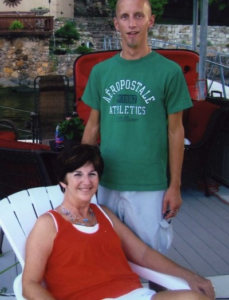
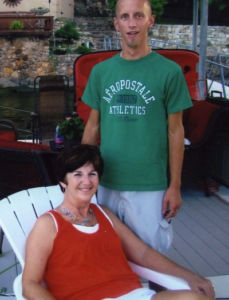
Carol most recently spoke at the June 2014 Saving Sight Board of Directors meeting and Lions L.E.A.D. event, so we thought it appropriate to re-share the web article from 2011 so she and Mark can continue to have a positive impact on others.
When someone loses a loved one, it’s difficult to find the good in such a heartbreaking situation. However, for many families, eye, organ, and tissue donation has given them a sense of hope. And when those families hear from their loved one’s recipients, it’s particularly rewarding.
In 2010, Carol lost her 30-year-old son, Mark. Unbeknownst to the family, Mark had made the pledge to become an eye donor through Missouri’s first-person consent registry – a choice that didn’t surprise Carol.
“Mark was absolutely the most loving person that we know in our family,” she said. “He cared very much about his family – about everybody. He didn’t know a stranger. Mark was never judgmental, gave everybody a fair chance, and always tried to help the underdog.”
As Carol and her family moved through the grieving process, they received a letter from Saving Sight informing them that Mark’s corneas had been provided to two recipients in California. Carol wrote the recipients, introducing them to her son, and soon received letters back from both individuals. One recipient in particular struck a chord with Carol, and the two began corresponding frequently.
“I can’t say enough about how his words have helped me,” said Carol. “This man just amazes me. Even in his last letter, he said, ‘Mark and I had our stitches removed and the good doctor says our vision continues to improve. We are a good fit. There was a moment or two I did feel Mark was there.’ He couldn’t have said anything better to me.”
The recipient/donor family correspondence has not only helped in the healing process for Mark’s direct family, but for his church family as well. Carol has read letters from Mark’s cornea recipient to fellow church members, helping them to find hope in desperate situations and encouraging them to follow Mark’s lead by pledging to become eye, organ, and tissue donors through Missouri’s donor registry.
For Carol, Saving Sight’s correspondence program has made a difference for her family, and therefore, she urges donor families and recipients alike to consider writing their own letters.
“I know Mark is living through this gentleman. I feel he has Mark in the palm of his hand like another grandpa, and it gives me such a comforting feeling. This man was so generous in his thoughts and words back to my family.”
To learn more about writing your donor family or your loved one’s recipient, please read our Correspondence page or contact Saving Sight at 800-753-2265.
If you are a cornea transplant recipient or donor family and would like to share your experience like Carol has, please send us a note through our Contact page.
To join the millions of Americans like Mark who signed up for the donor registry, register online at Donate Life America or at your local Department of Motor Vehicles office. And be sure to share your decision with your family and friends.
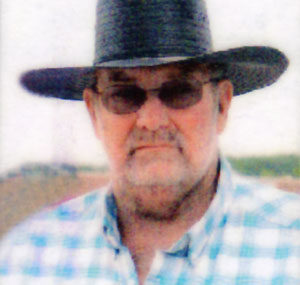

Janice and her brother, Jay, had no doubt that Jerry wanted to be a donor when he died, which made the decision simple and peaceful.
In February of 1990, Jerry received a kidney transplant that saved his life. When he received the kidney, Jerry was told he had seven more years to live. Thankfully, his doctors were wrong — he lived 23 more years to age 64. Jerry became a major supporter of donation in the extra years the transplant afforded him, and when he passed away on October 7, 2013, he became a donor himself.
“He wanted to pass on to help others,” said his daughter, Janice. She and her brother, Jay, had no doubt that he wanted to be a donor when he died, which made the decision simple and peaceful. “It’s really helped our family. Knowing that he’s helping other people and that he wanted to do that and his body was able to be used, that helps us. We like knowing we carried out his wishes.”
Janice described Jerry as a friendly man who didn’t know a stranger. He enjoyed fishing, helping Randy cut hay in the hay field, and spending time with his family and friends. The diabetes affected his sight, but when he could see well, he enjoyed reading, too. He also used his new lease on life to participate in donor awareness programs. “He went to Jefferson City at one point to plant a tree at the governor’s mansion as part of an awareness program,” Janice remembered.
When Jerry retired after 30+ years at MFA Feed, he was able to watch Janice’s three children so she and her husband could both work full-time. Now Janice works at Salem Christian Church’s daycare, enabling her to continue working and be with her children while her husband is away for his railroad job. But before this career change, she worked as an EMT, an Emergency Room Technician, and a Certified Nurse’s Assistant. “Since Dad was in the hospital from the time I was four years old, healthcare is all I’ve ever known,” she said. “I wanted to help others. As an EMT, there was a rush because you didn’t know what was going to be there when you got the call.”
The excitement of EMT work didn’t prepare her to receive a letter from one of Jerry’s tissue recipients. Jerry donated his corneas, one of which helped a woman who was going blind from Fuchs’ dystrophy. The thank you letter she wrote to Janice made an impact. “I had to have my husband read the letter to me,” she said. “But then I’ve been taking it around and showing it to my friends and family.” Janice plans to respond to the cornea recipient’s letter, to share what it’s meant to her and her family that Jerry helped someone through donation. “I knew [Saving Sight] would let us know if he was eligible to donate corneas, but I didn’t know we’d find out if somebody got them,” she said. “Knowing a specific person could get use from his cornea, that he’s actually helping someone, that’s comforting to all of us.”
Jerry’s heroic decision to be a donor continues to be meaningful to his family. “We all still wear the green Donate Life bracelets,” Janice said. “We all registered and got our licenses changed. Even his grandchildren know that some of his body parts helped other people and they think that’s awesome.”
To join Janice, her family, and millions of Americans like Jerry who signed up for the donor registry, register online at Donate Life America or at your local Department of Motor Vehicles office. And be sure to share your decision with your family and friends.
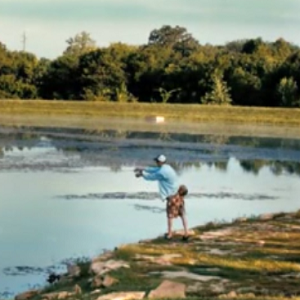
Chris shares his experience as a corneal transplant recipient. Before the surgery, he was losing his sight to keratoconus.
Eye donors change lives. You can join the donor registry online at donatelife.net or at your local Department of Motor Vehicles office. And be sure to speak with your family about your choice to donate.
The first time I went fly fishing after my surgery, it was amazing. There was so much detail.
Click here to read Chris’s full story.
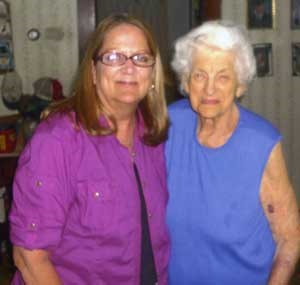

Charlotte, right, received a cornea transplant with tissue donated by Cody,
son of Bonnie (left). After years of
correspondence, Charlotte and Bonnie decided to meet each other.
Correspondence after donation and transplantation can be a positive part of the healing process for many people. Saving Sight offers donor families and cornea transplant recipients the opportunity to write to each other in a safe, positive environment. Acting as an intermediary, Saving Sight accepts the letters and then passes them on to the appropriate parties, which helps preserve everyone’s anonymity. Recipients and donor families alike have said that correspondence had therapeutic effects.
When Bonnie’s son, Cody, died in Divernon, Illinois after a car accident, he was able to donate skin and corneas. “Cody always wanted to be an organ donor,” she said. One of his corneas was received by Charlotte from Clinton, Missouri, who needed the transplant to treat a corneal infection that threatened to destroy her entire eye. Quite soon after her transplant surgery, Charlotte initiated the correspondence process with the help of Paul, her son who lived with her and cared for the family farm. Paul said his mother was eager to correspond with her donor’s family because she understood loss, having recently lost two grandchildren. “Because of that unselfish loved one was a donor and gave me a gift, I still have my eye,” Paul remembered Charlotte saying. “So she wanted to contact the family and thank them.”
With Paul’s help, Charlotte sent a letter to Saving Sight which was then passed on to Scarlett, Cody’s wife. “Scarlett didn’t feel like she was ready to correspond, so I asked permission to correspond instead,” said Bonnie. And with that, Bonnie and Charlotte began the process of getting to know each other. “Charlotte was very understanding that someone died to give her this cornea,” Bonnie recalled. “She was a really sweet lady.”
When people correspond for more than a year and both parties consent to communicating without anonymity, Saving Sight will connect the donor family and recipient so they can pursue contact on their own. Bonnie and Charlotte wrote several letters in that first year and continued contact in the years that followed.
“We talked on the phone sometimes, at birthdays and at Christmas,” Bonnie said. Eventually, Bonnie offered to visit Charlotte at her home in Clinton. “My daughter Tara and I had discussed from the time I first started corresponding with Charlotte how we would love to meet her, although we knew it would be difficult on us. However, Tara was unable to come with me so I drove there on June 16, 2012, which was Cody and Scarlett’s wedding anniversary,” Bonnie said. “I stayed at Charlotte’s house for three or four hours and met Paul. We had a wonderful visit. It was nice to have a part of Cody with her, to know that he lived on. Cody had big blue beautiful eyes, and I just loved the fact that I got to meet her and look in her eyes.” Paul said the feeling was mutual: “It meant a lot to Mom to get to finally meet the person behind the voice on the phone, as Mom was unable to travel long trips.”
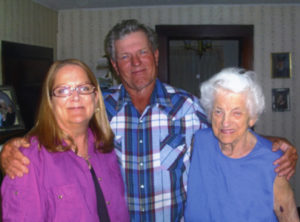
Charlotte, a cornea recipient, corresponded with Bonnie, the mother of a donor.
Despite the happiness of meeting Charlotte face to face, Bonnie also found the experience to be emotionally trying. “I held it all together until I drove out of her driveway, and then I cried all the way home,” Bonnie said. “It was Father’s Day the next day and just meeting her – she was a wonderful lady. She was very appreciative of how Cody had died but was willing to give his cornea. She never took it for granted. That’s why she wrote the letter – she wanted to know about the person who donated and his family.”
Charlotte’s daughter made quilted table cloths, and she gave one to Bonnie as a keepsake from their visit. “I cherish that,” Bonnie said. “Charlotte had health issues, and I think she knew we wouldn’t see each other again.” In April of 2013, Charlotte passed away at the age of 91, and thanks to Paul’s care, she was able to remain on the farm until a few days before her death.
Paul described his mother as having “an abundance of love that she shared with her eight children and many outside her family” and that she “was proud of Bonnie’s friendship.” Bonnie, too, looks back fondly on the trip: “I felt so fortunate to have met Charlotte. It’s hard to explain what it’s like to meet someone who has your son’s cornea. But I can’t say enough how blessed I felt by it all.”
To learn more about the young man whose generous donation brought Bonnie and Charlotte together, read Cody’s story. To learn more about Saving Sight’s correspondence process, visit our cornea donation and transplantation page.
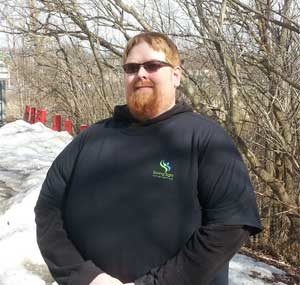

Brad, from the Springfield, IL area, lost
his sight to keratoconus but was able to regain his vision through corneal transplantation.
Brad from Mason City, Illinois describes himself as a computer guy. He worked on computers, worked in a computer store, and played computer games for much of his life. About seven years ago, though, he noticed that he was having trouble seeing the computer screens. “I thought I needed new glasses so I went to my optometrist’s office, and they referred me to another doctor who diagnosed me with keratoconus,” Brad said. “I told him I had trouble with my new glasses, and the doctor said it’s because you can’t correct keratoconus very well.”
Keratoconus significantly impairs vision for about 1 in 2,000 people, but its cause remains unknown. According to the National Keratoconus Foundation, the disease “is a non-inflammatory eye condition in which the normally round dome-shaped cornea progressively thins, causing a cone-like bulge to develop.” Brad described it like this: “Imagine the cornea like a soccer ball—it’s rounded. But for somebody with progressed keratoconus, the rounded part flattens out like the end of a football, and as it progresses, the cornea gets thinner. And with it being pulled and thinning, some of the tissue scars.”
As a result, Brad suffered from severe astigmatism. To help correct his vision, he received rigid, gas-permeable contact lenses that helped shape the eye, but this correction could not keep up with the ever-changing shape of Brad’s corneas. Brad said that eventually he couldn’t tolerate the contacts anymore. “When the cornea distorts, it gets harder and harder to get a comfortable fit,” he recalled. “At my worst point, I could only wear contacts for an hour a day. Some days were better, but then it would hurt so much I couldn’t wear them for days after.”
After losing his job in a layoff and reaching a point where the contacts were no longer a viable solution to his vision problems, Brad moved from Springfield, IL back to his parents’ house and took steps to receive corneal transplant surgery. Uninsured after the layoff and no longer able to work or drive due to his vision, Brad applied for disability benefits through the Social Security Administration, which included the Medicare coverage he would need to receive a transplant. Finally in 2011, after six months of waiting, Brad received a full-thickness corneal transplant on his left eye from Dr. Yang at St. John’s Hospital. “The staff was amazing,” Brad said. “The surgery, considering how complicated it is, goes fairly quickly. It went really well. Within 6 months, I started showing really great improvements. Toward a year, they were able to come up with a lens correction to 20/25 in that eye.” In December 2012, Brad received a transplant in his right eye. The recovery has not been as successful as with the left eye, but he still has stitches to be removed and has appointments with Dr. Yang and his optometrist to see what else can be done to improve his vision.
Meanwhile, Brad keeps an optimistic outlook. He’s able to drive again, and he reads avidly, which he’d previously given up because it hurt too much. He even repaired the hardware on his smartphone recently, fixing a broken power switch. “It would have been impossible to do that before,” he said. “It attests to how far I’ve come.” And perhaps most importantly, Brad has used this time to improve his health in other ways. “In the last three to four years, as I was losing my sight, I started working on my health and lost 180 pounds,” he said. “I’m healthier than I have been in 15 years. I go to the gym five days a week, and my cousin trains me. I’ve taken the opportunity to improve myself all around.” With his vision and health improved, Brad is now looking for work again. “I want to get back into working in computers, something IT-related that’s hands on,” he said.
March is National Eye Donor Month, a time to honor eye donors and their families, and Brad encourages people to learn about the donor registry and sign up. “I believe in donation and always have. My mom’s a nurse and that’s something we always discussed up front,” he said. “There’s all kinds of tissues that can be used for transplants, like eyes, skin, and bone. That was the big thing you don’t really think about, but going through this experience has taught me that – donation is not always about saving someone’s life but also about improving someone’s life.”
Join Brad and the millions of Americans who have declared their choice to be eye, organ, and tissue donors by signing up for the donor registry at the Donate Life America website or a local Department of Motor Vehicles office.